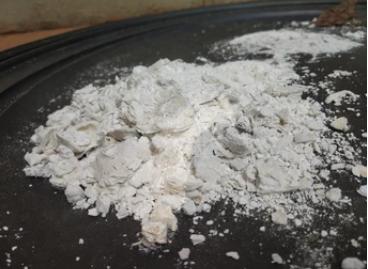What is calcium hypochlorite?
Calcium hypochlorite is a chemical substance with the chemical formula Ca(ClO)₂. It is a white solid, often in powder or crystal form. Calcium hypochlorite is the calcium salt of hypochlorous acid, hypochlorous acid (ClO-) is an oxygenated anion with disinfectant and oxidizing properties. Calcium hypochlorite releases hypochlorite ions and calcium ions when dissolved in water.

This compound is often used as a bleaching agent and disinfectant, and has a variety of uses, including disinfection, sterilization, and bleaching. Calcium hypochlorite is also widely used in the field of water treatment to disinfect and purify water and is a wastewater chemical used to remove bacteria, viruses, and organic matter from water.
Application Of Calcium Hypochlorite In Water Treatment
- Disinfection of water: Calcium hypochlorite can be used to disinfect drinking water, swimming pool water, industrial water, and disposal waste water. It can effectively kill bacteria, viruses, parasites, and other microorganisms in the water, thus ensuring the safety of water quality.
- Remove odor and organic matter: Calcium hypochlorite can oxidize organic matter and odor substances in water, which helps to remove pollutants in water and improve the quality and taste of water.
- Bleaching and color removal: It is also used as a bleaching agent, which is effective in removing colors and impurities when treating water sources that contain colors or stains.
- Alternative to chlorine: Calcium hypochlorite is often used as an alternative to chlorine because it is easier to control and store during use and is relatively safer to handle.
- Environmental friendliness: The use of calcium hypochlorite in water treatment processes is generally considered to have a low environmental impact compared to some other oxidizing agents.
Difference Between Calcium Hypochlorite And Sodium Hypochlorite
Calcium hypochlorite (Ca(ClO)₂) and sodium hypochlorite (NaClO) are two chemical substances that, although they both contain hypochlorite ions (ClO-), have some differences in chemical properties and uses:
Composition: Calcium hypochlorite is the calcium salt of hypochlorous acid, while sodium hypochlorite is the sodium salt of hypochlorous acid.
Physical properties: Calcium hypochlorite is often found in solid form, usually in powder or crystal form, while sodium hypochlorite is usually found in solid form, more commonly in powder or crystal form.
Uses: Although they are both common oxidizers and disinfectants, calcium hypochlorite is sometimes chosen for specific occasions, especially when calcium ions are needed, due to the presence of calcium ions in calcium hypochlorite.
Solubility: When dissolved in water, calcium hypochlorite releases calcium and hypochlorite ions, while sodium hypochlorite releases sodium and hypochlorite ions.
In the field of water treatment and disinfection, both substances can be used as disinfectants for similar purposes, but when it comes to specific applications, the choice of which one to use will be based on specific needs and conditions.
Working Principle Of Calcium Hypochlorite Water Treatment
Pretreatment: First of all, you can add calcium hypochlorite to the raw sewage to achieve pre-treatment, and then carry out preliminary solid-liquid separation and filtration of the sewage to remove most of the suspended solids and solid particles, to reduce the burden of the subsequent treatment steps. In carrying out the preliminary removal, the kuosi screw screen can be used to realize efficient solid-liquid separation for preliminary screening.
Calcium hypochlorite dosing: The appropriate amount of calcium hypochlorite solution is then dosed into the wastewater. The calcium hypochlorite solution will release hypochlorite ions, which kill bacteria and oxidize organic matter.
Mixing and residence time: The mixed calcium hypochlorite solution is mixed thoroughly with the wastewater to ensure that the calcium hypochlorite comes into full contact with the microorganisms and organic matter in the wastewater to achieve the effect of disinfection and oxidation. A certain residence time is needed to ensure that the reaction is sufficient.
Advantages Of Calcium Hypochlorite In Water Treatment
Calcium hypochlorite, as a commonly used disinfectant, has a number of advantages in water treatment over other disinfection methods (e.g., ozone, sodium hypochlorite) that may include.
Stability: Can be stored and used for long periods under proper conditions, ozone requires more equipment and controls for preparation and storage, while sodium hypochlorite requires special environments and packaging to avoid failure during storage and transportation.
Convenience: A solution can be prepared by dissolving solid calcium hypochlorite and adding it to water. Ozone needs to be prepared in a specialized ozone generator, while sodium hypochlorite needs to be diluted and properly controlled for application.
Cost-effectiveness: Calcium hypochlorite is a relatively affordable disinfectant with a relatively low cost of preparation and use.
Sterilizing effectiveness: Calcium hypochlorite is effective in killing microorganisms, including bacteria, viruses, and parasites, at appropriate concentrations. This disinfectant is usually able to achieve good bactericidal efficacy in a relatively short contact time.
Calcium Hypochlorite Mixing Precautions
Calcium hypochlorite can have dangerous chemical reactions when mixed with certain chemicals, so avoid mixing it with the following chemicals:
- Organic matter: Calcium hypochlorite should not be mixed with organic matter, because organic matter may degrade calcium hypochlorite, affect its disinfection effect, or even produce toxic gas.
- Reducing agents: Avoid mixing with reducing agents (e.g. sulfuric acid, sulfurous acid, sulfide, etc.) because the reducing agents may neutralize the calcium hypochlorite, leading to its failure or danger.
- Acids: Mixing with acids (e.g. hydrochloric acid, sulfuric acid, etc.) may trigger exothermic reactions and produce harmful gases, and acids will reduce the disinfection effect of calcium hypochlorite.
Summary
Calcium hypochlorite is a commonly used disinfectant and oxidizer, commonly used in water treatment and effluent treatment, can achieve a good disinfection effect in a relatively short period, but the use of need to follow safe operating procedures, pay attention to safety protection.
Kuosi has always been a partner you can trust. We are committed to providing our customers with state-of-the-art water treatment solutions and products, offering you high-quality products such as paddle dryers, roots blowers, grit removal equipment, and filter presses. Please contact us for a quote and technical support from our professional team.
